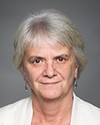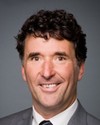Mr. Chair and honourable members, I'm pleased to be before you today on a somewhat different matter than what I've been speaking to you about lately, namely, to talk about chemical weapons in Syria. It may be useful to provide you with a bit of a history of the issue.
As my colleagues have made clear in their statements, the security and humanitarian situation in Syria is grim, and has been ever since the start of the conflict in March 2011.
Syria has long been suspected of possessing a chemical weapons arsenal, believed to be a deterrent against Israel. In July 2012, Syria openly admitted that it possessed chemical and biological weapons, asserting that these could be used against “external aggression”.
As the fighting in Syria continued to escalate, the international community became increasingly concerned that the Assad regime might resort to using these abhorrent weapons against its own population, or that the instability in the country might permit them to fall into the hands of extremist groups who are more and more present in Syria.
The U.S. and other allies laid down firm red lines in the summer of 2012, warning the regime against the use of chemical weapons. Canada consulted closely with allies on contingency planning regarding possible responses to an eventual chemical weapons attack, although this was still seen as only a remote possibility at the time.
Canada stepped up its efforts and played a key role, with significant contributions in response to the chemical weapons threat in Syria. Through the global partnership program, the stabilization and reconstruction task force and the counter-terrorism capacity building program, Canada has contributed $47.5 million in security-related assistance to the region to address the conflict in Syria more broadly, including programs and equipment related to weapons of mass destruction threats, such as those posed to the region by a chemical or biological weapons attack in Syria.
Further, Canada contributed $2 million to the Organisation for the Prohibition of Chemical Weapons, the OPCW, to enable it to be ready immediately to investigate CW, chemical weapons, use in Syria, should the need arise.
In March of this year, and despite red lines being drawn, allegations of CW use by the Syrian regime started to emerge. Throughout the spring, we received uncorroborated reports of small-scale attacks against opposition areas, with minimal casualties. The regime in turn claimed chemical weapons use by the opposition.
In light of the small-scale attacks, the UN Secretary General triggered, on March 21, a rarely used mechanism permitting him to launch an investigation into the alleged use of CWs in Syria, despite the fact that Syria was not, at that time, a state party to the Convention on the Prohibition of the Development, Production, Stockpiling and Use of Chemical Weapons and on their Destruction. The team was headed by the UN with participation by experts from the OPCW and the World Health Organization. Canada's financial contribution to the OPCW was key to the success of this UN-mandated investigation, a fact that was emphasized to us again just two days ago by the UN High Representative for Disarmament, Angela Kane, whom some of you may have met two nights ago.
The Syrian authorities initially blocked access to the UN investigation team on its territory, alleging difficult negotiations on the terms of reference of the mission. It was only on August 19 that the UN investigators were allowed into Syria. Two days after the team's arrival to investigate alleged CW use that had taken place in the spring, the mission was on the front lines to witness the deadliest of CW attacks in the Ghouta region on the outskirts of Damascus. According to U.S. estimates, this attack took the lives of over 1,400 people, including many women and children. The scale and abhorrent nature of the attack sparked tremendous outcry from the international community, and the UN investigation team immediately shifted its investigative focus to this attack. The availability of fresh evidence greatly assisted the team in its efforts.
The attack triggered a chain reaction of unprecedented diplomatic activity. The "red line" set by the U.S., Canada and other western allies having so obviously been crossed, the Syrian regime feared retribution and decided to surrender its CW arsenal. While the U.S. and Russia negotiated a framework agreement on the elimination of Syria's CW capability, the Syrian government submitted its letter of accession to the Chemical Weapons Convention. The U.S. and Russia joint framework agreement of September 14 laid out a detailed destruction plan for Syria's chemical weapons program, with very ambitious timelines. Unanimous decisions by the UN Security Council, in the form of Resolution 2118, on September 27, and by the OPCW Executive Council allowed an unprecedented joint UN-OPCW mission to eliminate the CW arsenal of Syria by June 30, 2014.
The ambition but also the risks associated with this initiative cannot be overstated. Never has the OPCW or any other body attempted to verify and inspect the destruction of chemical weapons in a conflict zone. The awarding of the Nobel Peace Prize to the OPCW next week is both timely and deserved.
The UN-OPCW mission in Syria has made considerable progress thus far in implementing the U.S.-Russian framework agreement. Two of the three major phases of the destruction plan have been completed. The first and second phase consisted of the OPCW inspecting all 23 CW sites declared by the Syrian government and the destruction of all critical equipment in the production of chemical weapons at declared mixing and filling facilities, both by November 1. Only one facility remains uninspected due to the local security situation, but it is believed to have been previously abandoned and emptied of CW components by the regime who had moved those to the now declared sites.
The third phase will be the most difficult. It consists of removing the chemical agents from Syrian territory, despite and because of the ongoing civil war there, for destruction elsewhere. This will be done in two waves.
It is intended that the more critical CW agents be removed from Syria by December 31. These will be subject to a destruction process, known as hydrolysis, aboard a U.S.-commanded modified vessel outside Syrian territorial waters.
A second wave of chemical precursors of a less sensitive nature will be removed from Syria by February 5 and destroyed in a commercial facility at a location to be determined.
The OPCW has called on companies with the requisite expertise to submit an expression of interest in destroying the second wave of chemicals as well as the hydrolysate residues from the first wave.
At the closing of the submission period, 41 companies from around the world expressed an interest, including, to our knowledge, two Canadian companies. Evaluation of the proposals, selection, and follow-up with the chosen companies will be done, or has been done, by the OPCW technical secretariat.
Time is of the essence. The international community must act quickly if we are to meet the successive timelines necessary to destroy, once and for all, Syria's chemical weapons program.
The OPCW and the UN made pleas to the international community in October for more and necessary contributions. In October Canada responded to an urgent request to airlift 10 U.S. armoured vehicles for the secure transportation of the inspection teams. An Air Force Globemaster III did two trips from Maryland to Beirut to deliver those vehicles. Numerous other countries have also stepped up and made significant contributions.
However, the UN and the OPCW are in need of much more. The trust fund established to finance the complex operations is quickly depleting. There is a need as well for a large amount of in-kind contributions to complete the destruction phase. My department is currently considering options on how Canada could further contribute to the joint mission.
There is a risk perceived by some that by funding the destruction of CW in Syria, the international community may be aiding, if not legitimatizing, the Assad regime. We disagree.
It is in the best interest of the Syrian people, the region, and the entire world to ensure that these weapons cannot be used again against anyone. This is particularly the case when these weapons are being held by a state that has already demonstrated its willingness to use them.
Canada, along with the international community, is working to ensure that the Assad regime, or its potential successors, no longer have access to chemical weapons. That does not exculpate the Assad regime from having used such abhorrent weapons, and a variety of conventional weapons, against its own people.
Finally, once the immediate priority of dismantling and eliminating the CW program has been addressed, the international community will need to deal with the issue of accountability for war crimes and crimes against humanity, including the use of weapons long outlawed by civilized nations.
Thank you.




